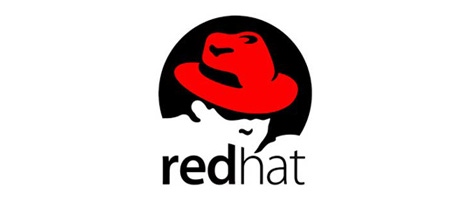Community Concerns Prompt Red Hat to Drop CentOS for CentOS StreamCommunity Concerns Prompt Red Hat to Drop CentOS for CentOS Stream
According to Red Hat, CentOS is being ditched for CentOS Stream because it "was not actually providing that much usefulness to Red Hat."
December 15, 2020

Red Hat's decision earlier to stop development of the Linux distribution CentOS to concentrate on CentOS Stream has created a brouhaha on social media. That's because it has IT pros who are dependent on the popular server operating system scurrying to figure how best to replace it now that Red Hat and the CentOS board have announced that at the end of 2021, CentOS as a Red Hat Enterprise Linux clone will cease to exist.
Until this announcement, users of CentOS 8 expected it to be supported until 2029. (Ironically, CentOS 7 will continue to be supported through June, 2024.)
What will remain is CentOS Stream, a rolling release for developers that started life in September 2019. Unlike CentOS, Stream tracks upstream instead of downstream of RHEL, but downstream of Red Hat's community distribution, Fedora, as it's set to become the testing ground for future RHEL releases.
This change presents a conundrum for a large number of IT departments. Since its first release in 2004, organizations wanting the stability of RHEL, but who didn't need Red Hat's support, have used CentOS as a free, drop-in RHEL replacement. This is especially true of hosting companies, which generally run their shared hosting services on CentOS, and make it the default OS for virtual private servers.
"As with any decision like this, there was a lot of discussion and several aspects that went into it," Mike McGrath, Red Hat's VP of Linux Engineering, said. "I would say the big one for us was that CentOS itself was not actually providing that much usefulness to Red Hat. Most of the communities we set up, Fedora for example, do have a lot of bidirectional community involvement. Unfortunately, CentOS was never like that. It was always a community of users, so that that contribution model was mostly one way."
That "usefulness to Red Hat" was part of the equation might come as a surprise to those who have assumed that CentOS was Red Hat's way of staying true to its open source roots by making sure that there was a fully capable version of its server freely available. (The company protected its branded RHEL behind a support subscription paywall.)
The CentOS distribution started as an independent project with no official connection to Red Hat, but got Red Hat support in 2014. Under Red Hat, the project was directed by an independent governing board and many of CentOS's head developers were Red Hat employees, working apart from RHEL developers as part of the company's open source and standards team. As part of the agreement, Red Hat took possession of CentOS's trademarks.
Evidently these trademarks are important to Red Hat, and were cited by McGrath as one of two main reasons why Red Hat didn't merely turn the project loose to find a new home.
"One is that the CentOS trademark is owned by Red Hat and we really couldn't figure out a way to properly separate those two, like it's a part of Red Hat now," he said. "And two, even if we could we really wouldn't want to. We actually do like CentOS. We like the engineers, the community that is out there. We do like them. It just that we wanted to make them have a healthier community there, not one that was just all user based."
When asked for suggestions for organizations that were going to need to replace CentOS, McGrath didn't mention purchasing RHEL subscriptions but mentioned a restricted free version of RHEL that will be announced sometime before the end of June, an available "upgrade" path to CentOS Stream, as well as other Linux distributions that are based on RHEL, such as Oracle Linux and ClearOS.
As for the restrictions on the as-yet-to-be-announced free version of RHEL, McGrath indicated it'll be a modification of a current developers' program that requires a user's name and address as part of the signup process, and which doesn't allow for the software to be redistributed.
"There's a lot of kind of quirky little things like that in the terms that we're going to make better," he said. "We're also looking at some general other use cases that are not classic RHEL use cases, or at least not classic sales engagements, that we're looking to fill with with standard RHEL as opposed to some other downstream clone. We're talking about those a lot and you should hear more in the first half of next year."
When CentOS 8 reaches its end-of-life, Red Hat will become something of an outlier among commercial Linux server developers, as the only one not making free version of their product available to users. Ubuntu Server is free for users to download and use, and a drop-in replacement for SUSE is available in a downstream community distribution, openSUSE Leap.
There is another possible solution on the horizon for those looking for a CentOS replacement. Almost immediately after the impending end of life for CentOS was made public, CentOS co-founder Gregory Kurtzer (who left the project in 2005) announced Rocky Linux, which already has a presence on GitHub, as well as a trademarked name.
The project's website calls it "a community enterprise operating system designed to be 100% bug-for-bug compatible with America's top enterprise Linux distribution now that its downstream partner has shifted direction." The website also says there's no date set for a first release and that it's actively seeking contributors.
About the Author
You May Also Like








.jpg?width=700&auto=webp&quality=80&disable=upscale)
